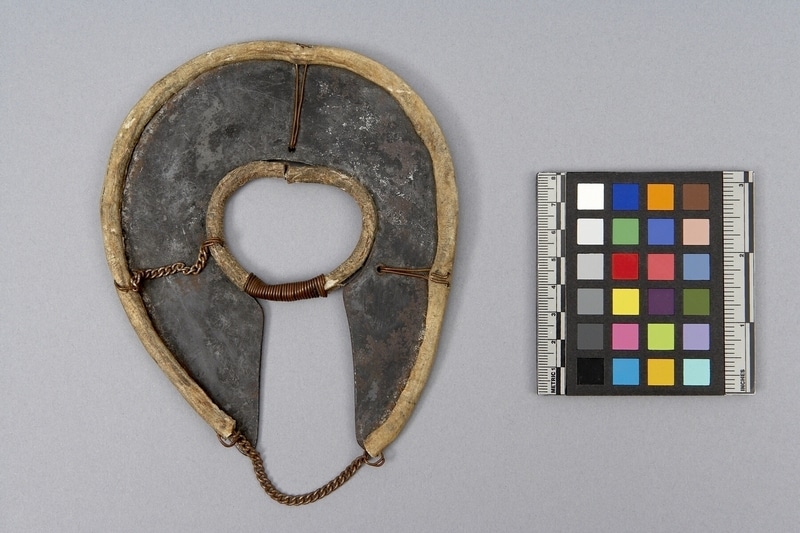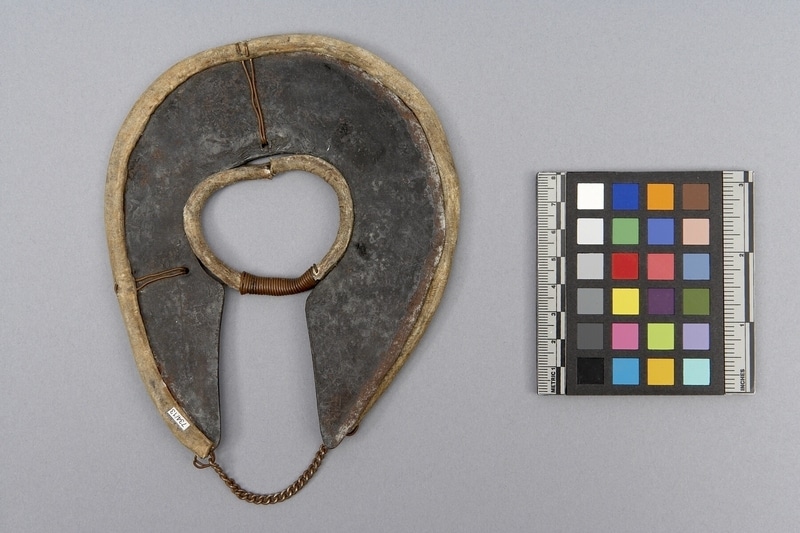Wrist Knife Item Number: 734/13 from the MOA: University of British Columbia


Description
Wrist knife that has a U-shaped thin steel metal piece that is bordered on the interior and exterior by thin strips of leather skin. Exterior leather is attached to other side at the top with a chain. Exterior and interior leather pieces are connected with a small chain at the side. Interior leather piece has a coil of copper at the top. Steel metal is attached to the skin with copper wires through holes in the side and in the bottom.
History Of Use
Wrist knives, or fighting knives, are widely used in several communities in east and south Africa, and are an essential feature of traditional dress among the Turkana and Karamojong. Traditionally worn by men, the wrist-knife serves both as a defensive weapon, and also a multi-purpose blade for utilitarian tasks. Wrist knives usually have a narrow ring of leather or hide around the blade as a sheath to protect the wearer from accidental injury. Their multi-use and light-weight made them very useful to the semi-nomadic Turkana and Karamojong people. Under British colonial rule, the Turkana were prohibited from carrying most kinds of weapons, a measure which likely limited use of wrist knives.
Narrative
Exhibited at the Burnaby Art Gallery in an exhibit of local collections, pre-1981.
Item History
- Made in Kenya ? before 1981
- Owned by May Cannon before September 10, 1981
- Received from May Cannon (Donor) on September 10, 1981
What
- Name
- Wrist Knife
- Identification Number
- 734/13
- Type of Item
- knife
- Material
- steel metal, leather skin and copper metal
- Overall
- height 0.5 cm, width 15.5 cm, depth 13.0 cm
Who
- Culture
- Turkana ? or Karamojong ?
- Previous Owner
- May Cannon
- Received from
- May Cannon (Donor)
Where
- Holding Institution
- MOA: University of British Columbia
- Made in
- Kenya ?
When
- Creation Date
- before 1981
- Ownership Date
- before September 10, 1981
- Acquisition Date
- on September 10, 1981
Other
- Item Classes
- metalwork
- Condition
- good
- Accession Number
- 0734/0013